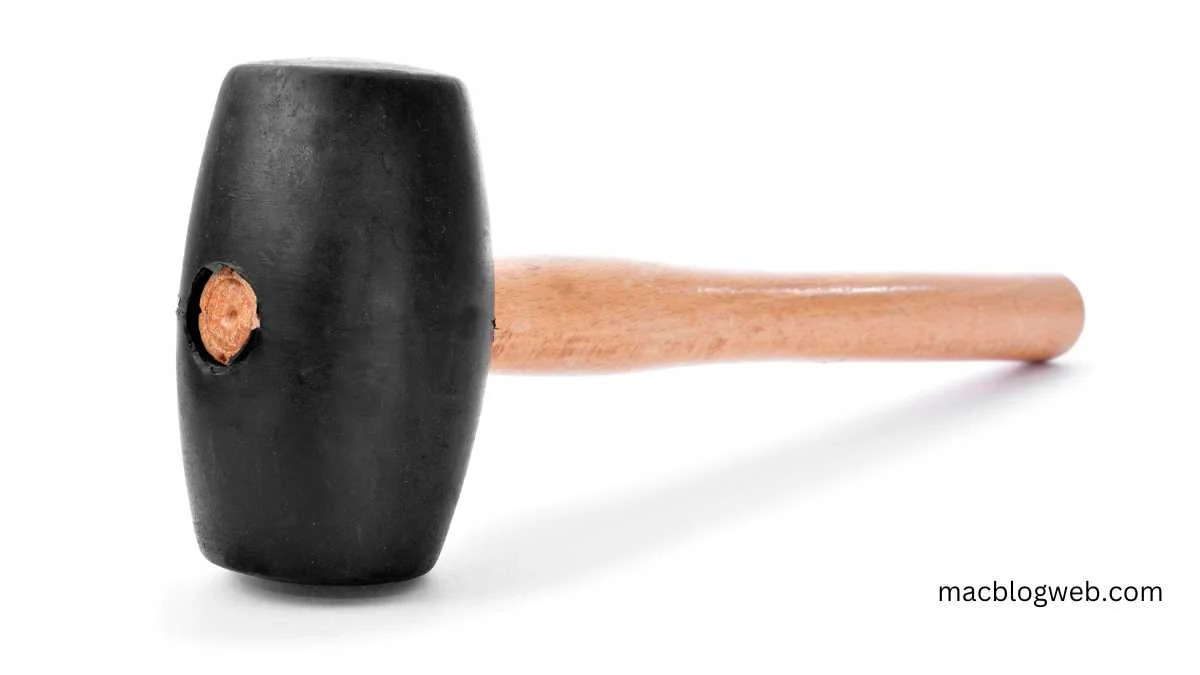A mallet, often confused with its larger counterpart the maul, is an indispensable tool across a variety of industries, from carpentry and upholstery to culinary arts. This tool is characterized by its large head, typically made from materials softer than steel such as wood, rubber, or even certain metals like copper and brass. Unlike hammers, which are generally designed to deliver high impact with steel heads, mallets provide a more measured force, making them ideal for tasks requiring more finesse or where surface damage is a concern.
Historical and Modern Uses of Mallets
The mallet has a storied history, with its utility being recognized in various forms across centuries. From ancient woodworkers to modern-day artisans, it has evolved but the essence of its use remains the same—to impart controlled force. In carpentry, they are used to assemble joints, insert dowels, and drive chisels without damaging delicate surfaces. In upholstery, it help in securing fabrics without tearing them. Even in sports like cricket, specialized wooden they are employed to condition and maintain the bats.
Types of Mallets and Their Construction
Wooden Mallets
Wooden mallets, crafted usually from durable hardwoods like oak, maple, or beech, are common in woodworking. The design of a wooden includes a handle fixed to a large, rounded head, which spreads the force over a wider area than a typical hammer. This design helps in joining pieces of wood together or in chiseling without marring the surface.
Rubber Mallets
Rubber mallets, recognized by their black or white heads, are used where a softer touch is needed. White rubber are less likely to leave marks on surfaces, making them ideal for sheet metal work, positioning tiles, and other applications where cosmetic damage is a concern.
Metal Mallets
Metal mallets made from non-ferrous metals like copper, brass, or lead are important in mechanical work. They provide necessary force without the risk of sparking, which is crucial in environments where flammable vapors or residues are present. These are also prevent damage to precision parts of machines, deforming slightly upon impact to absorb excessive force.
The Culinary Mallet
In the culinary world, meat malets are essential in preparing meat by tenderizing muscle fibers, making them softer and easier to eat. These are often have two sides—one flat and the other with pronounced spikes. Despite the advent of mechanical tenderizers, manual meat malets remain popular in both home kitchens and professional settings for their control and effectiveness.
Choosing and Using
Selecting the right malet involves considering the task at hand. For delicate woodworking, a wooden is appropriate, while metal fabrication or mechanical work might require a rubber or metal. The size of it also impacts its use—a larger head can deliver more force but may be cumbersome for precise tasks.
Using it effectively requires a technique different from that used with hammers. The user must ensure the it’s face is parallel to the surface being struck to distribute the force evenly. This technique helps in maximizing the impact and reducing damage to the tool and the workpiece.
Maintenance and Care
Maintaining it involves regular inspection for signs of wear and damage. Wooden should be kept dry and away from extreme temperatures to prevent cracking. Rubber should be cleaned to remove oils and debris that can degrade the rubber. Metal should be checked for deformation and replaced if the shape becomes too altered for effective use.
Conclusion
The mallet is a timeless tool that combines strength with precision, providing versatility across various professions. From the intricate joints of a wooden cabinet to the robust machinery of an industrial plant, it play a crucial role in building, maintaining, and creating. Whether you are a seasoned carpenter, a skilled upholsterer, a gourmet chef, or a weekend DIY enthusiast, understanding and utilizing the appropriate can enhance both the process and the final product, exemplifying the adage that sometimes, force is best applied with a touch of finesse.
FAQs on Mallets
- What is the primary difference between a mallet and a hammer?
A mallet typically has a softer head made of wood, rubber, or non-ferrous metal, designed to deliver controlled force without damaging surfaces, unlike the high-impact steel head of a hammer. - What are the common types of mallets and their uses?
Wooden malets are used in woodworking, rubber malets for delicate tasks like tile placement, and metal malets in mechanical work requiring non-sparking tools. - How do you maintain and care for a mallet?
Keep wooden mallets dry to prevent cracking, clean rubber malets to remove debris, and inspect metal malets for deformation, replacing them if they lose their effectiveness.








